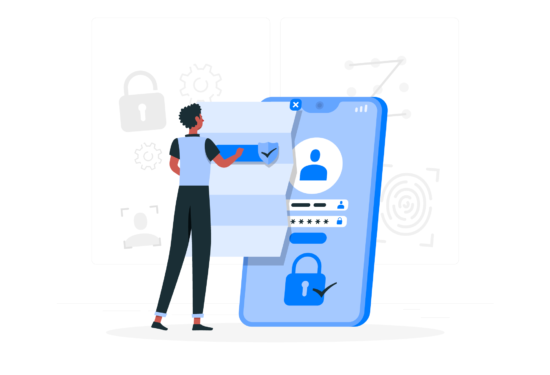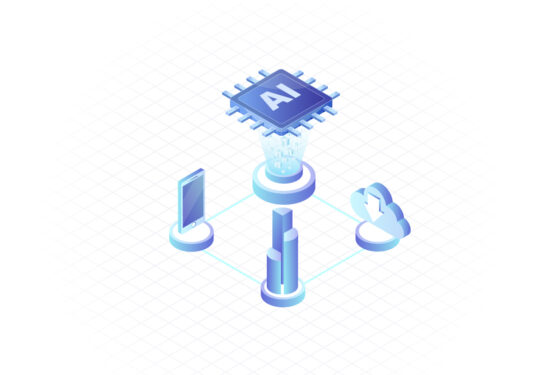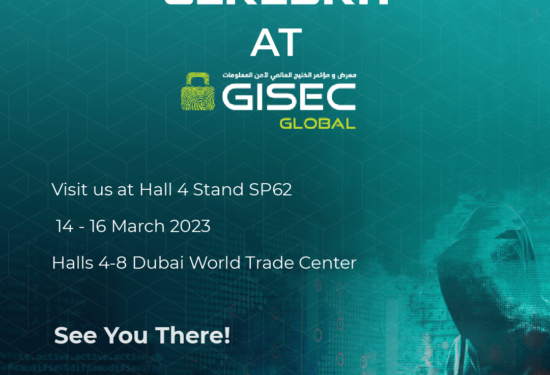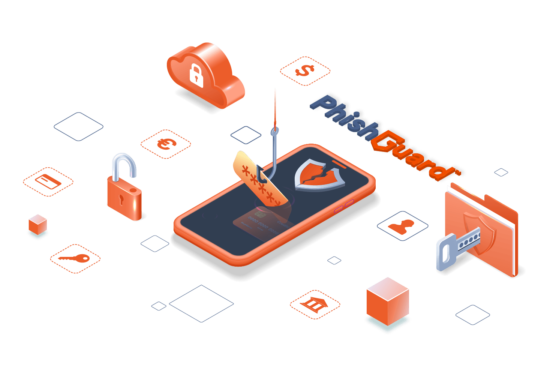Cyber-attacks come in a variety of formats and with the advancement of technology it continues to improve. Phishing is a common type of cyber-attack used by cyber criminals, and according to Proofpoint’s threat report, 75% of organizations experienced a Phishing attack and receive a Phishing Email in 2020 (Proofpoint 2021 state of the Phish report).
Best Ways to Identify a Phishing Email
Cyber criminals found a higher success rate in achieving their goals thorough email phishing rather than any other approach. This is due to the lack of awareness and knowledge on how to identify legitimate emails from fake ones. There are many ways that could help organizations in decreasing the numbers of successful phishing attacks and educating their employees on this topic is one of them. Being able to spot a phishing email is very helpful to achieve that goal.

So, what are phishing emails and how do you spot them?
What is Phishing & Phishing email?
First, we must define phishing, phishing is a malicious method used by cyber criminals to collect confidential data from users. The attackers pose as a trustworthy individual or organization in order to get the victims to trust them and disclose their personal information.
Phishing attacks may be used for financial extortion, identity theft, and gaining unauthorized access to the victim’s account. Email phishing is one form of phishing used by cyber criminals.
Unfortunately, 96% of cyber-attacks are delivered through email (Verizon 2020 Data Breach Investigations report).
One way cyber criminals can attack: A cybercriminal sends a phishing email to a victim, when the unsuspecting individual opens the email and clicks any link or downloads any attachment within the email, malicious malwares or key loggers are downloaded onto the users device and begin stealing the users information and could possibly spread to other users on the network!
Cyber criminals use eye catching words such as Urgent! Attention! Important! this way they insure they grasp their victim’s attention and entice them into clicking on malicious links or opening malicious files.

Especially, with the recent global pandemic they know what society is looking out for, which is constant updates.
Therefore, the number of people who got hacked skyrocketed in this period. Many suffered from this and exposed their personal, financial, and medical data, in particular organizations. Last year, the number of business email compromise (BEC) attempts witnessed a significant 15% increase (Abnormal Security 2020 Quarterly Q3 BEC report). This proves the importance of educating your employees on how to be alert and distinguish phishing emails from authentic ones.
But how could you spot a malicious email from the hundreds you receive? Listed below are the top 5 ways to do so and which could help you avert future troubles.
5 Ways to Identify a Phishing Email
1- ALWAYS check the sender domain before interacting with the email. This is one of the easiest giveaways to the hacker’s scheme. If the email is truly from your bank, then you would receive it from a private domain not a public one such as @gmail.com or @hotmail.com.
2- Spelling mistakes and grammatical error are evident in phishing emails. When an organization sends out an official email to its employees or customers they run it through a spell-checking tool to verify before sending. Which is why, when you see multiple errors in an email do not overlook it as simple mistakes, instead take it as a sign to not interact with it any further.
3- In phishing emails, malicious links and attachments are a staple. This way when you click on them you singlehandedly corrupted your cyber privacy. These attachments download malwares that can hack into your system and steal your personal data. So, do not be hasty on clicking anything until you determine the authenticity of it.
4- When you receive an email stating you won a prize or free subscription to something you never interacted with or visited, that can indicate the legitimacy of the sender. Also, when you start receiving newsletters for something you did not sign up for then it is a high chance of it being a phishing email.
5- Cyber criminals will most likely try to scare the victim into providing them the information they need by sending an important email that required immediate action for example it can be an email disguised as their bank or place of work, they do so by stating “Warning! Account will be closed if not…” and etc. This will urge the recipient in following the warnings afraid of any damage without thoroughly looking through the email checking for potential flaws.
Bonus: You could also implement a phishing simulation solution such as PhishGuard that trains your employees specifically about one of the most fundamental security threats, and to educate users on how to respond to the growing phishing security risks! PhishGuard also enables periodic assessment, measurement, and monitoring of your employees’ readiness to detect phishing scams.
In Conclusion
Email phishing is one of the many ways to be taken advantage online, but after educating yourself around this topic, this could help in reducing the chances of being a future victim to this type of attack. Always be cautious when opening and interacting with any email you receive. This could spare you from future inconveniences.
Think, before you click!
Share this article:
Popular

Tips To Be Cyber Protected While Traveling
Goodbye worry! A safe journey in the digital world With all the modern wonders of the digital world, we trust communication technologies on our journeys. There is no doubt that the travel experience is always more beautiful and enjoyable, but it can also pose a range of risks, especially when it comes to cybersecurity. Travelers may fall victim to phishing, Wi-Fi network spying, and theft of their personal data, which can make their journey filled with worries and tension. With the increasing prevalence of cyber threats, it is essential for travelers to follow some guidelines to protect their devices and ...
1st Apr 2024
Push Authentication: A New Era in Multi-Factor Authentication
Want To Say Goodbye To Passwords and OTP Codes? Discover Push Authentication! It is easy for your password to be compromised through phishing attacks, even if it meets the cybersecurity strong password standards and is difficult to predict So we must get to know the technique of Push based Authentication. Some may recommend that you use Multi-Factor Authentication (MFA) to increase your security. Multi-Factor Authentication (MFA): MFA is the process of logging into your account through multiple steps. It requires you to enter more information, not just your password. But there is another obstacle that arises when using such ...
14th Feb 2024
The Difference Between Phishing Attacks
The Difference Between Phishing Attacks Phishing attacks are harmful attacks used by criminals to steal personal and financial information from individuals and businesses. Attacks on individuals and businesses are becoming more common as we use the internet and technology more often in our daily lives. Phishing attacks involve the use of dishonesty and fraudulent methods to fool consumers into believing they are interacting with the trustworthiness of an unsuspecting destination, such as banks, email companies, or social media platforms. But what is the difference between phishing attacks? How can individuals and organizations protect themselves from such attacks? That is what ...
17th Jul 2023
Understanding of the Vishing Meaning
Understanding of the Vishing Meaning Vishing, a combination of “voice” and “phishing,” is a sophisticated form of cybercrime that exploits voice communication to trick individuals and extract sensitive information. In this comprehensive guide, we will explore the meaning of it, the dangers associated with it, and effective methods to protect yourself against these malicious attacks. What is Vishing meaning? Vishing refers to the fraudulent practice of using telephone services to trick individuals into revealing personal and financial information. Scammers often pose as trusted organizations or individuals to gain their victims’ trust. By using social engineering tactics and manipulating ...
5th Jul 2023
How could Artificial Intelligence tools threaten cybersecurity
How could Artificial Intelligence tools threaten cybersecurity? As Artificial Intelligence Tools become more sophisticated, they can be used to launch cyber attacks that are more complex and difficult to detect. In this article, we will explore how AI tools could threaten cybersecurity and what measures can be taken to mitigate these threats. Artificial Intelligence (AI) became popular today, and it is one of the most important terminologies in our current era, though it has been around since the 1950s. AI relies on the development of systems and technologies that help to do tasks by the simulation of human intelligence ...
11th May 2023
Cerebra is participating at GISEC 2023
We are thrilled to announce that we are going to GISEC 2023 and would like you to join us! Visit Cerebra at GISEC 2023 Hall #4 stand SP62 in Dubai World Trade Center from 14-16 March. GISEC Global is the leading gathering ground for the cybersecurity community worldwide. Top cybersecurity enterprises from 40 countries, CISOs from major corporations across the Middle East, Africa & Asia, government dignitaries and cyber leaders, regional and international innovators, and global experts collaborated to lead cybersecurity transformations across sectors and nations decisively. Get a chance to preview our latest Cybersecurity products: PhishGuard is the Phishing stimulations solution that raises the employees cybersecurity awareness ...
13th Mar 2023
6 Tips to create a strong password easily!
Create a strong password easily! Today it’s very important to everyone who have an account either on social media or any other websites or services to Create a strong password, because you have to treat your password as your best stuff’s and protect it from others. Learn now the easiest and best tips you have to follow to make a strong password.. What is Password? A password is a string of characters that provides access to a digital system or service. It is a crucial security measure that helps to protect sensitive information from unauthorized access. Passwords can be as simple as a word ...
1st Feb 2023
Employees and cyber security: dangerous statistics about Phishing
Employees and cyber security The relationship between employees and cyber security this days must be tight and your company have to give it the right care if you want to keep your data and your business secure.. According to insights from our leading Phishing simulation tool PhishGuard, 58% of users in Saudi Arabia have opened at least one phishing email. These insights reveal that at least one out of four employees have interacted with a phishing email, either by clicking on a link or downloading a malicious attachment. In some cases, employees have gone further and submitted their personal information ...
26th Oct 2022
LinQ2’s Participation at CITC Digital Technology Forum 2022
We are happy to announce that our product LinQ2, has been chosen to participate in CITC annual Digital Technology Forum, in addition to being nominated for the Top Technical Product award. The theme of this year’s forum is “Enabling Local Technology Products“. The Communication & Information Technology Commission (CITC) has recognized our efforts and achievements with our enterprise messaging gateway LinQ2. As our product can seamlessly and securely process messages from and to applications and systems, as well as have the ability to integrate with different channels and connection options. We at Cerebra continuously strive to become one of the ...
20th Oct 2022







